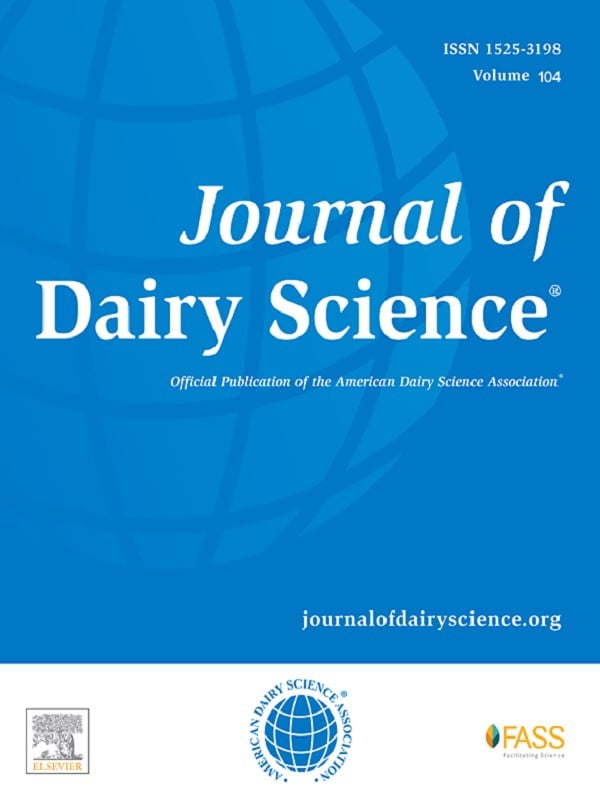Effects of exchanging lactose for fat in milk replacer on ad libitum feed intake and growth performance in dairy calves
J. Dairy Sci. 103:4275–4287

Abstract
The recent trend in the dairy industry toward ad libitum feeding of young calves merits reconsideration of calf milk replacer (CMR) formulations. Additionally, feed intake regulation in young calves provided with ad libitum milk and solid feeds is insufficiently understood. This study was designed to determine the effect of exchanging lactose for fat in CMR on voluntary feed intake and growth performance. Lactose was exchanged for fat on a weight/weight basis, resulting in different energy contents per kilogram of CMR. Thirty-two male calves (1.7 ± 0.12 d of age, 47.6 ± 0.83 kg of body weight) were assigned to 1 of 16 blocks based on arrival date. Within each block, calves were randomly assigned to 1 of 2 treatments. The experimental period was divided into 4 periods. In period 1, until 14 ± 1.7 d of age, calves were individually housed, restricted-fed their assigned CMR treatments at 2.5 to 3 L twice daily, and provided with unlimited access to water, chopped straw, and starter. In period 2, calves were group-housed with 8 calves per pen and received ad libitum access to their assigned CMR treatments, starter feed, chopped wheat straw, and water. During period 3, from 43 until 63 d of age, calves were weaned by restricting CMR allowance in 2 steps, maintaining access to all other feeds. All calves were completely weaned at d 64 of age and were monitored until 77 d of age (period 4). Measurements included the intake of all dietary components, body weight gain, and a selection of blood traits. Increasing fat content at the expense of lactose decreased CMR intake by 10%, whereas total calculated metabolizable energy intake and growth remained equal between treatments. Total solid feed (starter and straw) consumption was not affected by CMR composition. These data indicate that calves fed ad libitum regulate their CMR intake based on energy content. High-fat CMR increased plasma phosphate, nonesterified fatty acids, triglycerides, and bilirubin, whereas plasma glucose remained unchanged. Despite the limited animal numbers in the present experiment, there was a significant decrease in the total number of health events (mainly respiratory) requiring therapeutic intervention and in the total number of therapeutic interventions in calves fed high-fat CMR. Calves appeared to consume CMR based on energy content, with a difference in ad libitum intake proportional to the difference in energy content of the CMR, maintaining equal body weight gain and solid feed intake.